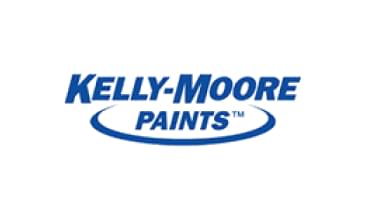Kelly-Moore Paints
Kelly-Moore Paints added asbestos to many of its paint, cement and texture products until 1978. The company closed in 2024 while facing workers’ asbestos lawsuits seeking compensation for mesothelioma and other asbestos-related diseases.

Written by Michelle Whitmer • Edited By Amy Edel
Asbestos.com is the nation’s most trusted mesothelioma resource
The Mesothelioma Center at Asbestos.com has provided patients and their loved ones the most updated and reliable information on mesothelioma and asbestos exposure since 2006.
Our team of Patient Advocates includes a medical doctor, a registered nurse, health services administrators, veterans, VA-accredited Claims Agents, an oncology patient navigator and hospice care expert. Their combined expertise means we help any mesothelioma patient or loved one through every step of their cancer journey.
More than 30 contributors, including mesothelioma doctors, survivors, health care professionals and other experts, have peer-reviewed our website and written unique research-driven articles to ensure you get the highest-quality medical and health information.
About The Mesothelioma Center at Asbestos.com
- Assisting mesothelioma patients and their loved ones since 2006.
- Helps more than 50% of mesothelioma patients diagnosed annually in the U.S.
- A+ rating from the Better Business Bureau.
- 5-star reviewed mesothelioma and support organization.
Testimonials
My family has only the highest compliment for the assistance and support that we received from The Mesothelioma Center. This is a staff of compassionate and knowledgeable individuals who respect what your family is experiencing and who go the extra mile to make an unfortunate diagnosis less stressful. Information and assistance were provided by The Mesothelioma Center at no cost to our family.LashawnMesothelioma patient’s daughter
How to Cite Asbestos.com’s Article
APA
Whitmer, M. (2024, February 15). Kelly-Moore Paints. Asbestos.com. Retrieved April 24, 2024, from https://www.asbestos.com/companies/kelly-moore-paint-co/
MLA
Whitmer, Michelle. "Kelly-Moore Paints." Asbestos.com, 15 Feb 2024, https://www.asbestos.com/companies/kelly-moore-paint-co/.
Chicago
Whitmer, Michelle. "Kelly-Moore Paints." Asbestos.com. Last modified February 15, 2024. https://www.asbestos.com/companies/kelly-moore-paint-co/.
Kelly-Moore’s History with Asbestos
Kelly-Moore Paints was one of the largest paint companies in the U.S. and sold asbestos-containing products for painting, cementing, texturizing and filling drywall from 1960 to 1978. Kelly-Moore’s spackling and taping compounds also contained asbestos.
For nearly two decades, the company used asbestos as a thickener, filler and fire retardant in its Paco texture products and other interior finishing products. Paco products contained 5% to 10% asbestos.
William Moore and William Kelly originally founded the company in 1946. In 1952, Moore bought out Kelly as a business partner but kept the established name. When Moore retired in 1984, Kelly-Moore had 80 stores and had grossed more than $136 million.
In 2022 Flacks Group acquired Kelly-Moore. At the time, Flacks predicted combined revenue from Kelly-Moore and its portfolio company Pleuger Industries would exceed $1 billion over the next few years.
In 2024, Flacks decided to close all 157 Kelly-Moore retail locations across the country. The move followed decades of fighting tens of thousands of workers’ asbestos lawsuits claiming asbestos-related diseases were the result of Kelly-Moore’s manufacturing.

Asbestos Litigation Involving Kelly-Moore
More than 48,000 lawsuits have been filed against Kelly-Moore seeking compensation for asbestos-related injuries including mesothelioma. The company commissioned a study that estimated future asbestos liabilities may exceed $170 million.
Unlike most other asbestos product manufacturers, the company hasn’t filed for bankruptcy and continues to face asbestos litigation. Kelly-Moore says neither chapter 11 bankruptcy nor in-court liquidation is an option.
Kelly-Moore Litigation Highlights
- 2024: After spending $600 million on asbestos settlements, company leaders decided to close all retail locations.
- 2018: Billie, Kathleen and James Belmer, as wrongful death heirs to Donald Belmer, filed suit against Kelly-Moore in San Francisco County. Donald Belmer died of asbestos-related lung cancer.
- 2004: 60-year-old Robert Tregget won a verdict in his trial in Los Angeles. He received 14% of a $36.6 million verdict from Kelly-Moore. Tregget used Kelly-Moore’s Paco Quik-Set joint compound to remodel his home in the 1970s.
- 2001: Alfredo Hernandez, a 47-year-old construction worker diagnosed with mesothelioma, was awarded $55.5 million following exposure to asbestos through a Kelly-Moore joint compound product.
Kelly-Moore filed a $4.1 billion lawsuit against Union Carbide in 2002, claiming the defendant failed to inform the plaintiff about hazards in asbestos-containing products before selling Kelly-Moore its asbestos-containing products from 1963 to 1978. Union Carbide claimed Kelly-Moore was aware of the hazards. In 2004, the case was tried in Texas and Union Carbide was found not guilty.
In 2005, Kelly-Moore set forth a motion to retry the Union Carbide case, claiming that Union Carbide hid evidence that connected its product to cancer and asbestosis. Judge J. Ray Gayle III of the Texas 23rd District Court for Brazoria County did not grant the motion.
Kelly-Moore’s Asbestos Products
Until 1978, much of Kelly-Moore’s range of products contained asbestos. Some products the company manufactured contained about 10% asbestos.
Kelly-Moore’s Asbestos-Containing Products
- Bedding cement
- Deco-Tex ceiling texture
- Paco All-Purpose point compound
- Paco finishing compound
- Paco joint cement
- Paco joint compound
- Paco Quik-Set joint compound
- Paco Ready Mix joint compound
- Paco spray texture
- Paco taping compound
- Paco texture
- Paco texture paint
- Paco topping compound
- Paco wall texture
As the International Agency for Research on Cancer points out, “…asbestos was used as a filler to improve the technical properties of paints….” and some asbestos-containing textured products were widely used in home decoration until the early 1990s. Textured paints often contained chrysotile asbestos.
Occupations at Risk of Exposure to Kelly-Moore’s Asbestos Products
Workers encountered asbestos fibers through Kelly-Moore’s products in several ways. Employees who worked in the company’s manufacturing facilities encountered asbestos on the job.
Workers were also exposed when mixing asbestos cement or using joint compound and texturing products. They were also exposed while adding drywall and applying paint and finish to shipyards and commercial and residential building projects.
Occupations at Risk From Kelly-Moore Products
- Carpenters
- Construction workers
- Drywallers
- Kelly-Moore employees
- Painters
- Plasterers
- Shipyard workers
According to a European Commission 2022 report, more than 70,000 workers died in 2019 from past exposure to asbestos. Unaware of the dangers of asbestos, painters often work without any respiratory protection close to asbestos-containing materials and surfaces.
These materials release asbestos particles into the air, which individuals nearby might inhale. Asbestos exposure can lead to a number of diseases, such as mesothelioma, which may develop 20 to 60 years after exposure.
In 2018, an International Journal of Epidemiology study looked at asbestos-related cancer risks for British workers in different industries. Painters were included in one of the highest risk categories, with a risk of mesothelioma almost 16 times higher than in the general population.







